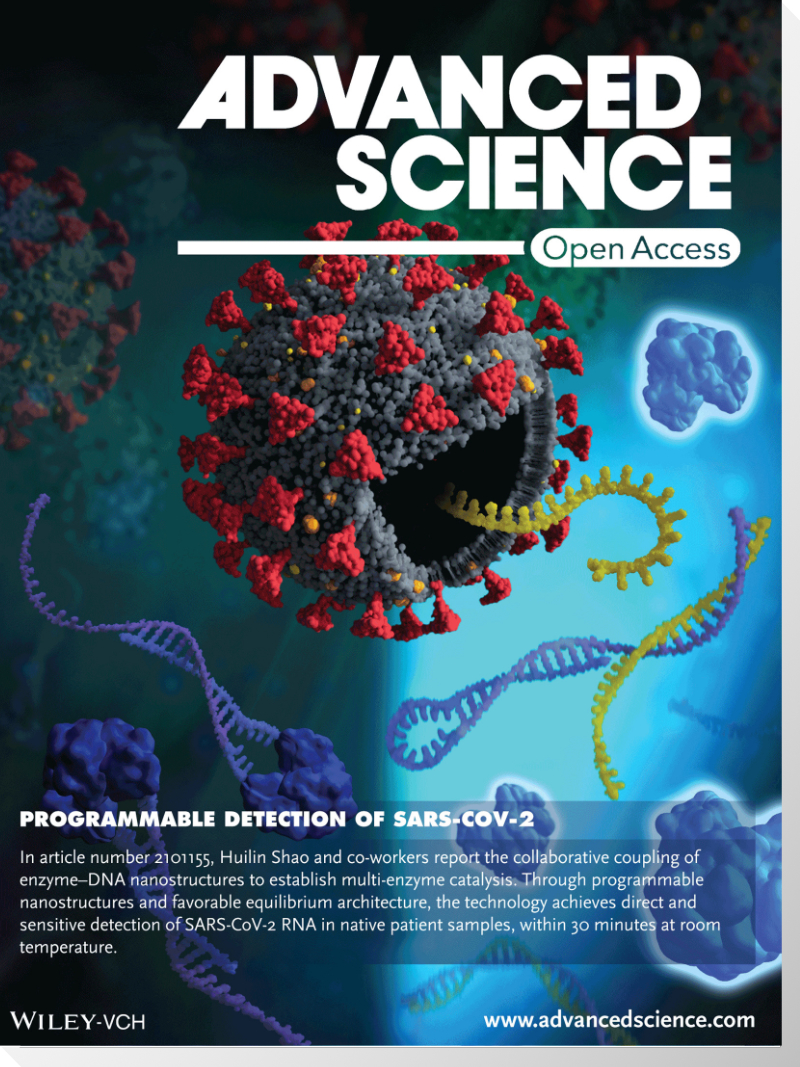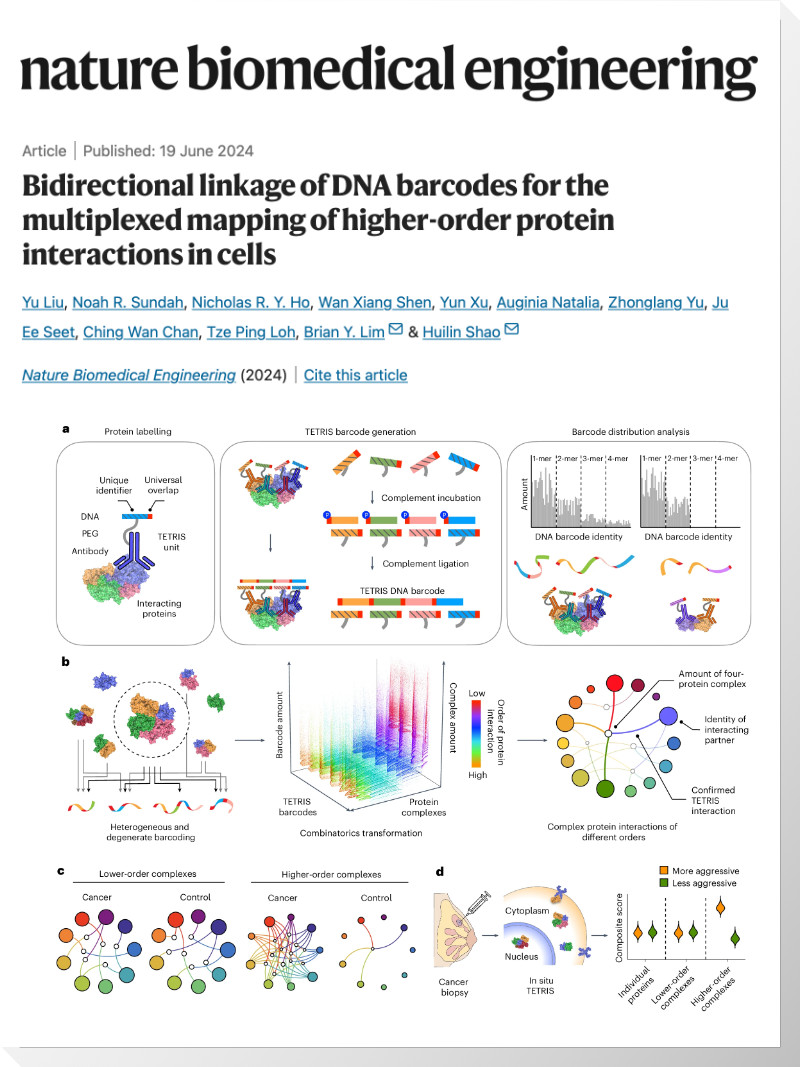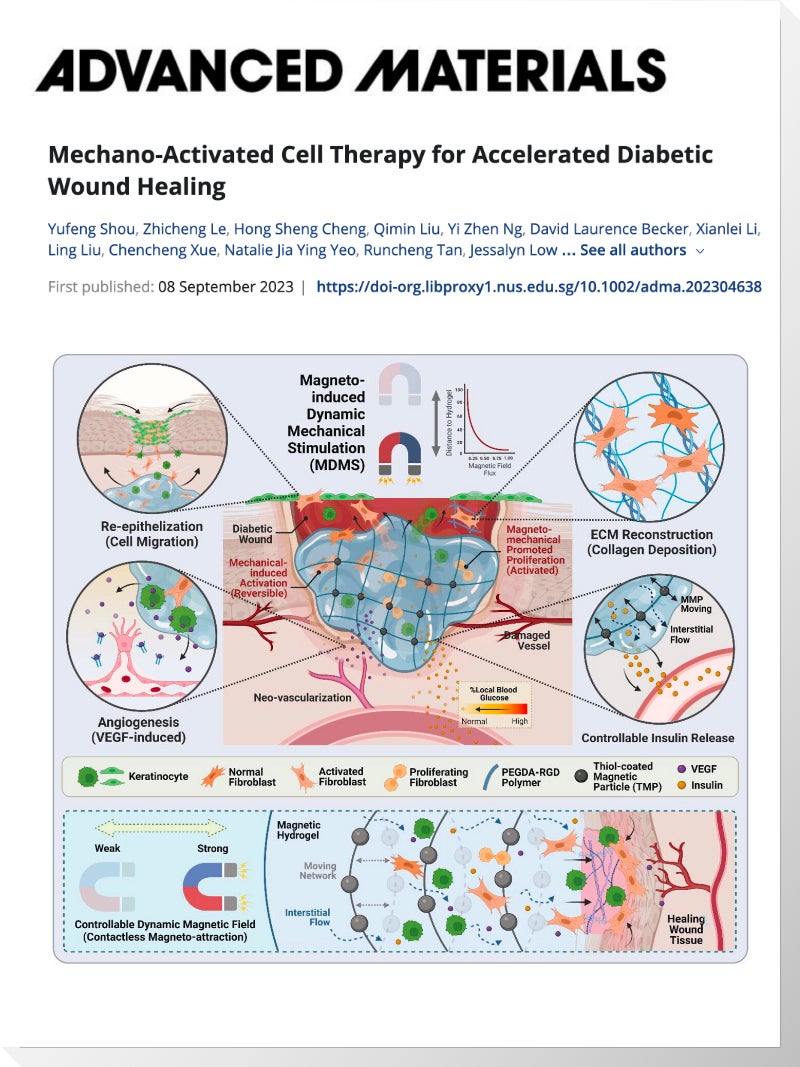Collaborative Equilibrium Coupling of Catalytic DNA Nanostructures Enables Programmable Detection of SARS-CoV-2
- July 18, 2021

Collaborative Equilibrium Coupling of Catalytic DNA Nanostructures Enables Programmable Detection of SARS-CoV-2
Yuan Chen, Noah R. Sundah, Nicholas R. Y. Ho, Auginia Natalia, Yu Liu, Qing Hao Miow, Yu Wang, Darius L. L. Beh, Ka Lip Chew, Douglas Chan, Paul A. Tambyah, Catherine W. M. Ong, Huilin Shao
Abstract
Accessible and adaptable nucleic acid diagnostics remains a critical challenge in managing the evolving COVID-19 pandemic. Here, an integrated molecular nanotechnology that enables direct and programmable detection of SARS-CoV-2 RNA targets in native patient specimens is reported. Termed synergistic coupling of responsive equilibrium in enzymatic network (SCREEN), the technology leverages tunable, catalytic molecular nanostructures to establish an interconnected, collaborative architecture. SCREEN mimics the extraordinary organization and functionality of cellular signaling cascades. Through programmable enzyme–DNA nanostructures, SCREEN activates upon interaction with different RNA targets to initiate multi-enzyme catalysis; through system-wide favorable equilibrium shifting, SCREEN directly transduces a single target binding into an amplified electrical signal. To establish collaborative equilibrium coupling in the architecture, a computational model that simulates all reactions to predict overall performance and optimize assay configuration is developed. The developed platform achieves direct and sensitive RNA detection (approaching single-copy detection), fast response (assay reaction is completed within 30 min at room temperature), and robust programmability (across different genetic loci of SARS-CoV-2). When clinically evaluated, the technology demonstrates robust and direct detection in clinical swab lysates to accurately diagnose COVID-19 patients.
Link: https://onlinelibrary.wiley.com/doi/10.1002/advs.202101155






